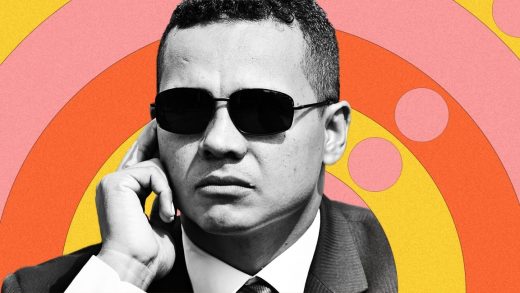Unpacking the CIA’s cringey recruiting strategy
A young LatinX woman wearing a casual blazer and T-shirt stands outside an office building looking proud and confident. As she walks the halls, she talks about her immigrant upbringing and her ability to straddle different worlds, while maintaining her sense of self. “I am a woman of color. I am a mom. I am a cisgender millennial, who has been diagnosed with generalized anxiety disorder,” she says. “I am intersectional, but my existence is not a box-checking exercise.”
Inclusive. Empowering. The vibe is similar to what you’d find in many corporate recruitment or employee-training videos from major American companies like HP and Unilever. Except this one was from the Central Intelligence Agency.
The video was posted in March, but it went viral this week as both the right and the left cried woke-washing, thanks to the laundry list of progressive buzzwords dropped in two and a half minutes. On the left, the argument is broadly that this is distraction propaganda, brushing aside the agency’s history of coups, assassination attempts, and rigged elections, in favor of a warm and fuzzy image.
CIA stands for Checking In on Allies
— David Parsons (@davidlparsons) May 5, 2021
On the right, it was called “propagandist garbage” and an example of a liberal takeover at the agency. Senator Ted Cruz became wistful for Jason Bourne, despite the fact that he’s a fictional character.
Lefties made “Jason Bourne” trend bc they think I don’t know he’s a fictional character.
Next, these angry scolds are going to tell me Jack Ryan & James Bond aren’t real either….
My point is that CIA agents should be bad-asses—not woke, fragile flowers needing safe spaces.
— Ted Cruz (@tedcruz) May 4, 2021
The ad is part of a broader initiative the CIA unveiled a couple years ago. “In 2019, we started our ongoing social media series, ‘Humans of CIA,’ for real officers to share their firsthand experiences,” a spokesperson for the CIA told Fast Company. (That was the agency’s whole statement.) Inspired by the popular site Humans of New York, “Humans of CIA” profiles and dramatizes real officers, their roles, and what brought them to the agency. It’s also a not-so subtle illustration of the diversity that the agency is seeking, profiling more than 12 of its employees in videos and photos across social media, from an Asian mom to a gay librarian with a nose ring.
This push for diversity isn’t new for the CIA. In 1994, then-CIA director R. James Woolsey said in testimony before the House Permanent Select Committee on Intelligence that “the ability to understand a complex, diverse world—a world which is far from being all white male—is central to our mission.”
According to a report last year from the Office of the Director of National Intelligence, 26.5% of intelligence agencies’ members in 2019 were racial and ethnic minorities, up slightly from 26.2% in 2018, but lagging behind representation across the federal government overall and the civilian labor force at 37.1% and 37.4%, respectively.
Former CIA director Robert M. Gates told The New York Times’ Tim Weiner in 1995 that during the Cold War, spies typically posed as diplomats in embassies, making the rounds on the playgrounds of the rich. When the Cold War ended, espionage became more complex, requiring a different, more multi-faceted approach. “You’re not going to recruit a rogue nuclear scientist at a cocktail party,” Gates said. “You have to look for a new kind of personality,” different from the vast majority of the spies, who are “primarily white middle-class guys. You need a guy walking into Tripoli or Pyongyang who doesn’t look like he just left Iowa.”
The FBI has had similar goals, as with 2018’s #UnexpectedAgent campaign. Aimed at 23- to 36-year-olds and plastered across social media and online ads, it called for unique skills that people might not immediately link to an FBI career. The FBI has also been linked to recent positive pop-cultural portrayals, like Marvel’s WandaVisison on Disney Plus.
For decades, the CIA has been flirting with Hollywood to make sure it’s depicted in an accurate and, more importantly, heroic light. In 2003, it even got Jennifer Garner—who played a CIA agent on the hit show Alias—to appear in a recruitment video.
Weiner, also author of the 2007 CIA history book Legacy of Ashes, says recruitment has been a significant problem for the agency ever since the end of the Cold War. Along with the diplomatic cocktail circuit went the idea of protecting America from a communist threat. The lack of definition post-Cold War muddled the sell to potential recruits. “Where’s your talent pool? You’ve got universities pumping out people with MBAs who want to work for McKinsey and become wealthy,” says Weiner. “Are they going to go work with the CIA for $40,000 to $60,000 a year?”
More recently, though, the CIA has been leaning into its more sensitive side. It redesigned its website in January, and promotes features like Artifact of the Week, which highlight historical objects from its spy museum. It has also had an “Ask Molly” feature since 2002, which is a way for the public to directly engage with the agency and ask questions.
The “Humans of CIA” videos clearly aim to pitch would-be employees on a stable, inclusive workplace with purpose. The agency is essentially asking young people contemplating private-sector salaries whether they want their measure of success to be advertising clicks or lives saved.
Is the newest video heavy-handed? Like a Jason Bourne uppercut. Yet advertisers clamor for the kind of earned-media attention this one video has attracted—the newspaper articles, the op-eds, the cable news fury. Between the extreme reactions are some people who now may consider the CIA a viable career option. The CIA may never quite capture the zeitgeist, but its clever disguise is worthy of any cocktail party.
Fast Company , Read Full Story
(58)



